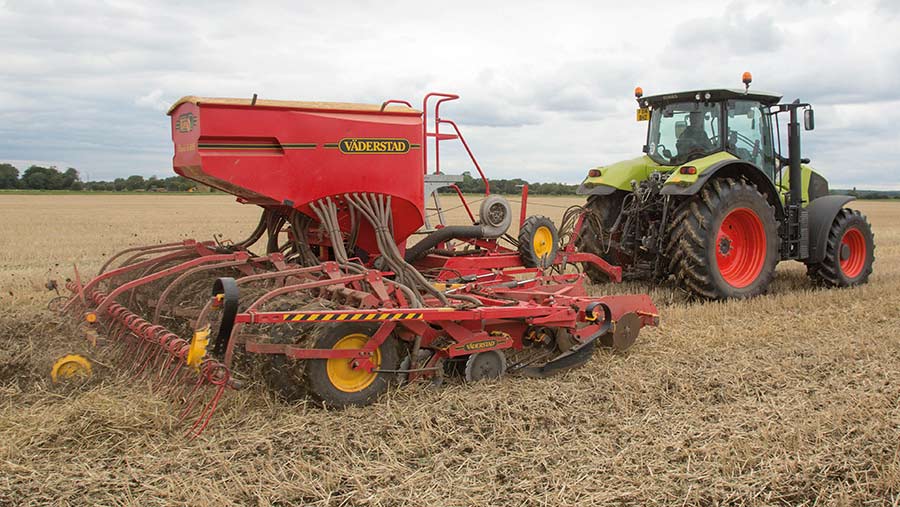How beet growers can slash fertiliser costs with cover crops
 © Tim Scrivener
© Tim Scrivener Cover crops could have a valuable role in supplying half of a sugar beet crop’s nitrogen requirement.
This could prove valuable as fears grow over fertiliser prices and availability following the closure of several fertiliser plants across Europe.
CF Fertilisers UK has temporarily halted ammonia production at its Billingham complex in the North East, while Yara has also curtailed ammonia production, and Grupa Azoty, Poland’s biggest chemicals firm, is planning to limit fertiliser production. Germany’s SKW Piesteritz and BASF cut some production earlier in the year.
See also: Are no-till potatoes a pipe-dream?
While the implications of all these changes are not entirely understood, the British Beet Research Organisation (BBRO) believes growers shouldn’t miss out on any options for using alternative sources of nitrogen.
One of these is using overwinter cover crops ahead of sugar beet in 2023.
However, time is of the essence in getting cover crops established.
The optimum window for drilling them is usually as soon as possible after harvest and before the end of August but, in most situations, it has just been too dry in 2022 to consider doing this.
However, recent rain may provide sufficient soil moisture for germination and establishment and, while soil temperatures remain favourable, a small window of opportunity exists.
Overwinter cover crops can provide a useful source of available nitrogen for following sugar beet crops and the BBRO has estimated they can provide up to an additional 40-70kg N/ha compared with leaving land in stubble.
This is about half of the nitrogen requirement of the sugar beet crop.
The ability of cover crops to supply plant-available nitrogen (ammonium-N + nitrate-N) for the following sugar beet crop will depend on several factors. One of the key things is the choice of cover crop species.
Legumes such as clovers and vetches can fix nitrogen and will be the most effective in increasing soil nitrogen levels, but other species will take up nitrogen as they produce biomass, releasing some of this when they are destroyed and decompose (see graph).
There may also be further gains, including nitrogen that has been absorbed and scavenged from the soil, which may have otherwise been lost through leaching over the winter period.
Nitrogen content of cover crop foliage and soil mineral nitrogen test* |
||||||
|
|
Rye/vetch (50:50) |
Vetch mix |
Rye/vetch (90:10) |
Oil radish |
Mustard |
Stubble |
|
Foliage N content (kg/ha in December) |
78 |
82 |
54 |
53 |
47 |
– |
|
Soil mineral nitrogen (kg/ha N in February) |
75 |
89 |
46 |
26 |
30 |
35 |
| * Result in following February ahead of sugar beet. BBRO/Rougham Estates cover crops strips, drilled 25 August 2017 | ||||||
BBRO’s recommended cover crop action plan 2022-23
- Don’t delay, target drilling before the middle of September whilst soil temperatures remain warm. Ideally, in soils when rain is imminent or there is sufficient soil moisture.
- Focus on legume species such as clover and vetches as these species can fix atmospheric nitrogen.
- Keep the proportion of legumes to more than 50% in cover crop species mixes. The nitrogen content of legumes is typically twice that of other species.
- Soil moisture is key to establishment and with soil moisture being so low this year, it needs to be conserved.
- Keep seed rates high in drier conditions (more than 30kg/ha).
- Consider drilling rather than broadcasting the seed so you ensure optimum seed-to-soil contact. Drill to a maximum of 10mm depth.
- Whether you’re establishing your crops via direct drilling or after lightly cultivating and then drilling, rolling should follow swiftly afterwards.
- Ensure cover crops are destroyed in the vegetative stage to help optimise nitrogen content in the dry matter and availability to the following beet.
- Cover crops decompose rapidly and release available nitrogen fast. Most is released in the four to six weeks after cover crop kill. Ensure a period of more than five weeks is left between destroying cover crops and the drilling of sugar beet to break any “green bridge” for pests and diseases, and for nitrogen to become available.

